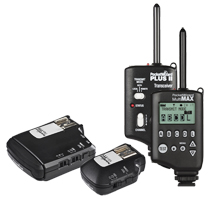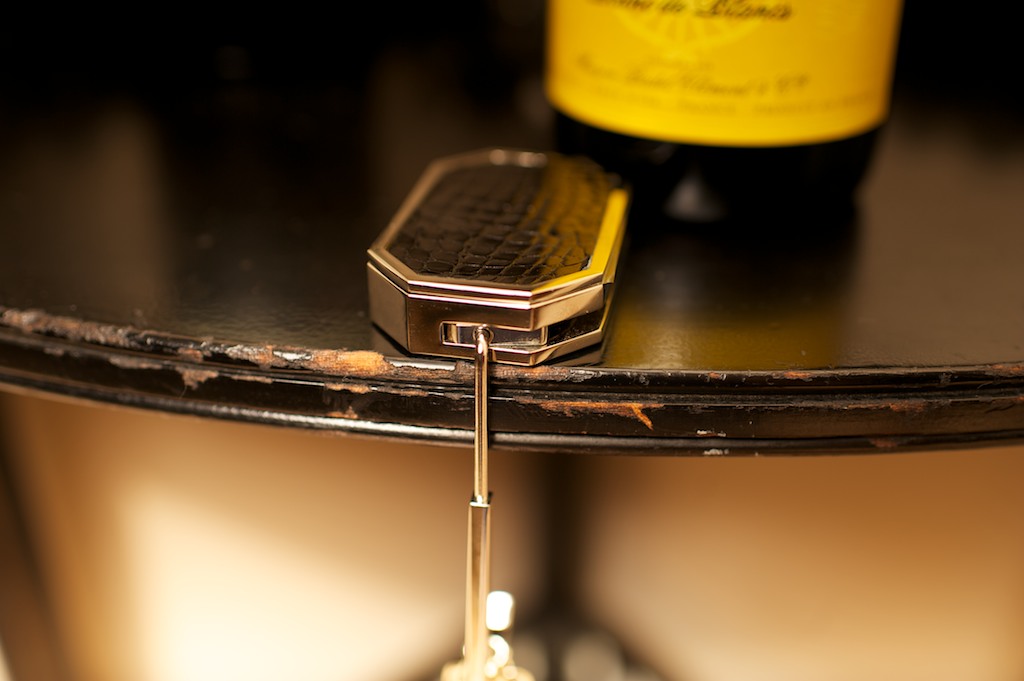This guest post on PocketWizard was written by Jon G. Dishler:
PocketWizard is well known to the wireless flash photography world [with classics like the Plus II] for basic flash triggering and more recently for advanced triggering with the TT5 and Mini TT1 radios. One really nice feature is the ability to update these radios over the Internet. This time they bring us Nikon version 3.0 and it is the most significant upgrade yet. Radio triggers are all about timing, and finally with this release most if not all of Nikon’s secrets have been unlocked so that no matter what the settings in camera or flash, the timing is correct for the desired exposure.
I am not a professional photographer, and you might have a slightly different workflow, but I have shot over 50,000 frames as an authorized beta tester for LPA who owns PocketWizard. Scores of photographers have worked with them on many versions up to this release. I am not a paid consultant to the company, but have worked closely with them through this process over the last year. My short list of lingering complaints has vanished with this new 3.0 release.
Since Nikon offers their own wireless creative lighting system (CLS), which provides communication from flash to camera, why do you need anything else? The readers of Nikon Rumors already know that answer but here it is for review. If there is a situation that is not line of sight, working in bright sunlight, or if using non-Nikon flashes like studio strobes, it just does not work very well. Many light modifiers hide the flash from view of the camera making CLS a non-starter. The earlier generation radio strobes helped with all of these problems but the newest ones do all of this but in addition something far more important.
In the studio, you might have different devices from different companies, with different speed flash tubes. PocketWizards can make them all play friendly. In addition, they solve the problem of too much light. I have two Elinchrom RX600’s, one D-Lite-it and two older D-Lite 4’s. There is just no way to fire all of these, even at the lowest flash setting without stopping down my aperture to f/11 or using dark filters. But what if I want shallow depth of field, say f/4 or even f/2.8? PocketWizards make that possible with what they call HyperSync. In most flash situations, you are below X-Sync and the flash determines the exposure. Shutter duration mostly just affects the ambient light helping with backgrounds. Hyper Sync uses the flashes like a light bulb and gives you back control of illumination. I can shoot at 1/640 with HyperSync at f/4 and all of my flashes can be just right. Take the lighting down a notch by changing to 1/800 and in the background the PocketWizard takes care of the timing details. No banding or dark curtains at these higher shutter speeds. Studio strobes never had it so good. But what about small flashes which can work at higher shutter speeds?
Similarly with FP sync or HSS (high speed sync) you can do this with little flashes like SB900’s or the newer SB700’s by getting a bunch of little pulses over time as the slit curtain slides past the sensor. The downside of this approach is that the illumination is much less than a full pop of light, so they need to be much closer to the subject especially if they are in something like a softbox. So even for these little flashes, the HyperSync route can be a help in that you can get more effective light. Pocket Wizards actually extend the X-Sync window with some amazing tricks (they don’t call them wizards for nothing). Many times you can gain a shutter speed or two before jumping into FP sync mode, getting more efficient use of your SB series strobes. And they even make them work better in FP sync when needed.
All of this brings us to the most important issue, which has been that tricky place between HyperSync and HSS. On my D3s this starts at 1/250 since that is the fastest that Nikon allows a full frame exposure. With HyperSync you can push this up and interestingly at very fast shutter speeds where there is a slit curtain there can be great exposure even up to 1/8000 second. But where and how these radios decide on the correct exposure at the 1/250 up to 1/400-shutter speeds or so has been challenging. And this is where we often live with Aperture priority settings on our camera when shooting outdoors. With version 3.0 this is no longer a problem.
Let’s say you are outdoors, shooting at sunset, Aperture priority f/3.2 using a 70-200 VRII and the sun is slowly going down. You are using a couple of fill lights with umbrellas or softboxes lit by SB900’s mounted on FLEX TT5 radios. As the ambient light drops so does your shutter speed from 1/800 down to 1/320 over 30 minutes. Suddenly, you are getting overexposures, well that was true until upgrading the firmware to 3.0. Now every shot is perfect. And suppose you want to crank up the light just a little on the right side – no problem, with an AC3 on top of the Mini TT1 on your camera. You can, in auto mode, in 3 different zones make small adjustments by stops, or you can slide a switch to manual and have even more independent control of the lighting. The key benefit is that from the camera you can tweak exposures between shots and all of the flashes respond as intended.
Later that evening you want to take the shoot into the studio, with a bunch of larger strobes like my Elinchrom RX600’s. As I said before, with HyperSync you are free to use any lens, camera, f/stop and with smart receivers like the ST4 for Elinchrom or the MC2 or AC9 for AlienBees you can make all kinds of discrete changes shot to shot.
What is more, now you can take the radio (mini TT1 or FLEX TT5) off of your camera and test fire it walking around between your lights, changing light positions, gels, whatever, and fire them at will. Now with 3.0 you can adjust the firing of each light separately, something you could not do before. The radios fine tune the timing both at the sending AND the receiving end of the line. One trick that I like is to take a picture of all the lights firing, to be sure that they are all in sync and that they are working as expected at the beginning of the session.
There are many other neat features, some of which you might use, and others maybe not. Speed cycler is one, where with the AC3 zone controller, you can fire off banks of lights in sequence which lets you not have to wait for the recycle time for your lights. This lets you take 10 fps flash photography, with relatively inexpensive lights.
Canon has had the fun with these newer radios for a couple of years, but they have problems with radio interference so their radios have to wear “jackets” but for Nikon they have only been out this year, and only very recently has the firmware been as robust as it is now with this 3.0 release. I have tested it with both D3s and D300s bodies using a wide variety of lenses and flashes. In a word it is now bulletproof.
Everyone is waiting for the announcement of new Nikon professional camera models, but you might find that the benefits of perfect lighting control now available for the first time for Nikon is as important as a new camera. And since the firmware is upgradable, when the new cameras do come out, soon to follow will be updates from PocketWizard. I am confident that when the new D4 is released, there will shortly follow a PocketWizard update to include it.
Some might complain about the added cost, but I would not even think of taking flash photos without my PW’s, in fact I have ten of them altogether. For less than the cost of one medium priced lens, you can have all the benefits of perfect radio controlled and more importantly photographer controlled lighting.
SHOES: 24-70mm at 70 mm f/4 at 1/2000 outdoors with Mini TT1 and AC3 on camera with two SB900’s on TT5’s shot through softbox diffusers
PURSE HOOK: 35 mm f/1.4 at 1/400 indoors with Mini TT1 and AC3 on D3s with RX600 with beauty dish with ST4 using HyperSync
MODEL (in pink dress): 70-200mm at 70 mm f/5.6 at 1/640 illuminated by 5 Elinchrom flashes various configurations
For additional examples go to http://www.fashionsnag.com which is a fashion blog which all of the photos have been taken for the last year using PocketWizard radios.








